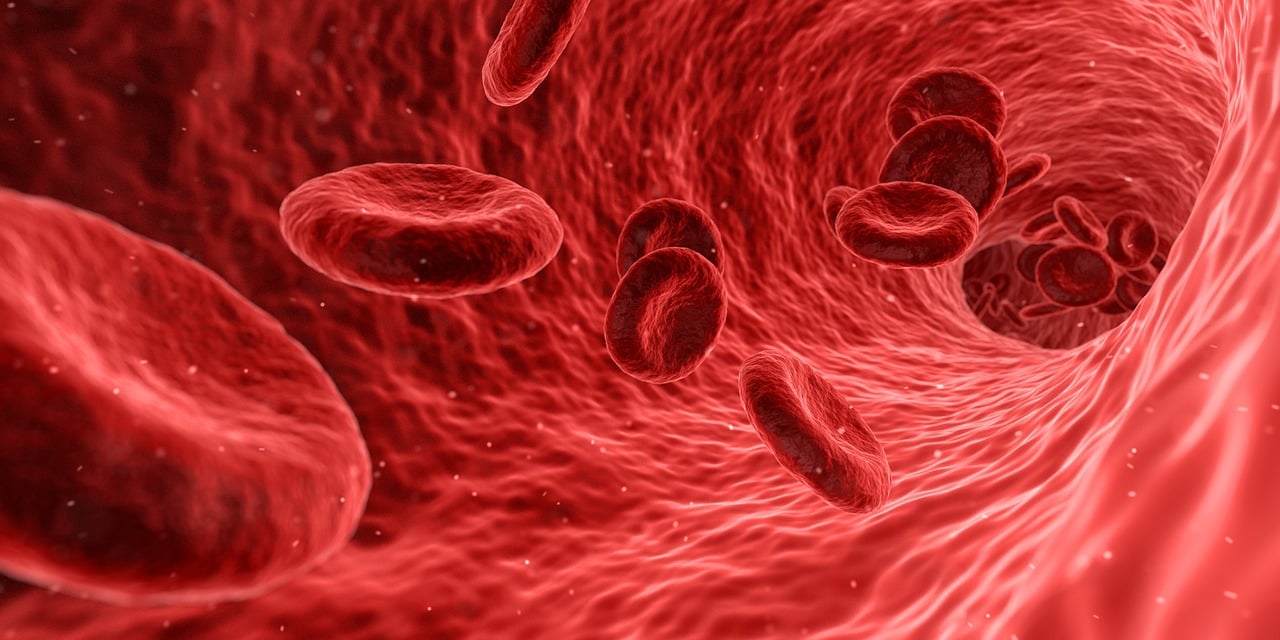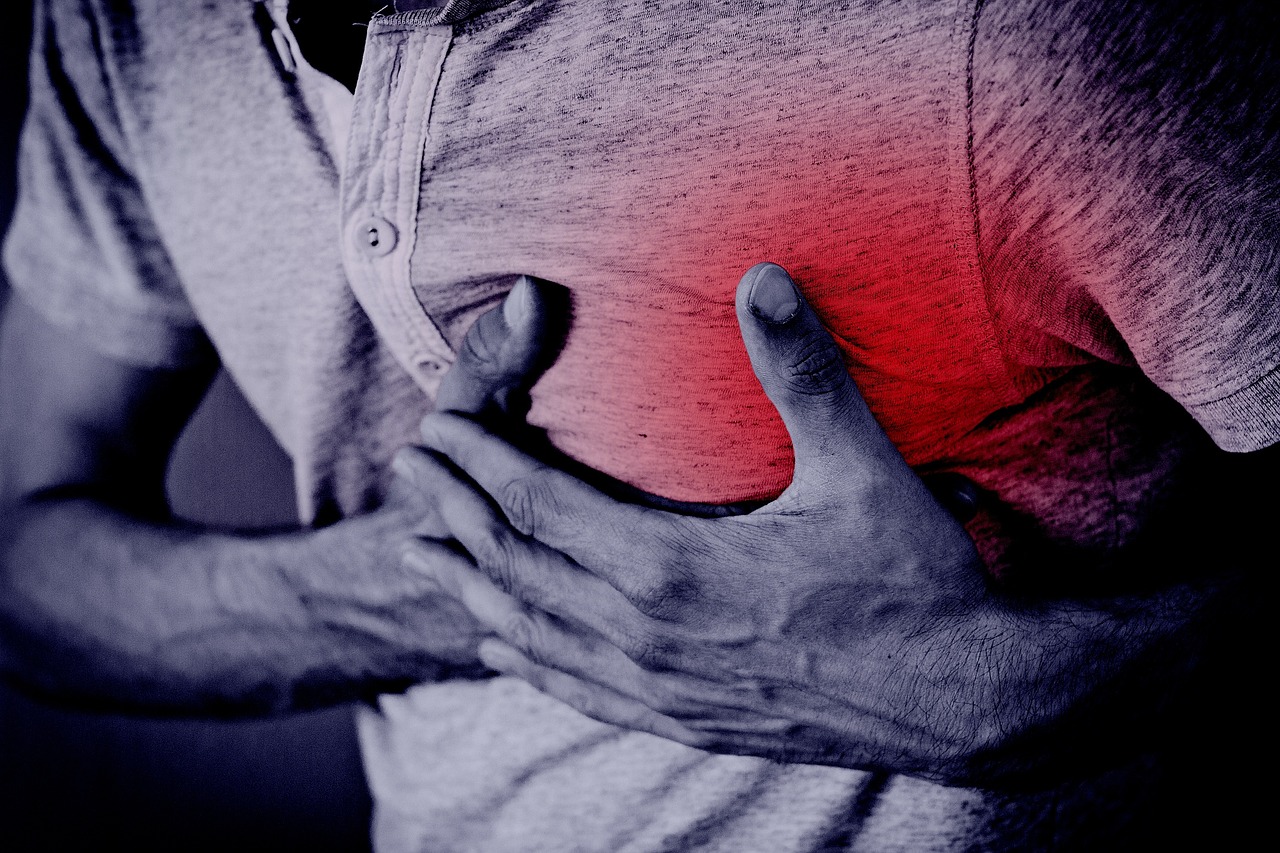Cholesterol is a water-insoluble fat essential to the human body. Among other things, it is part of structural cell membranes. Cholesterol in the body can be exogenous, meaning it is supplied with food and then absorbed. It is produced only in animal organisms since plants cannot synthesize this compound.
The human body also makes it. Humans produce it endogenously in their bodies, mainly in the liver, intestines, and skin. The World Health Organization![]() has set cholesterol standards that should not be exceeded. Cholesterol levels that are too high can cause various consequences. Cholesterol can be divided into two types, affecting the human condition differently.
has set cholesterol standards that should not be exceeded. Cholesterol levels that are too high can cause various consequences. Cholesterol can be divided into two types, affecting the human condition differently.
The organic chemical compound cholesterol has many essential biological functions. Cholesterol is often associated negatively due to its harmfulness at excessive levels. However, it is also necessary for the human body, and only when cholesterol levels rise dangerously can it become harmful. So let's first pay attention to what good cholesterol does for our bodies.

Cholesterol is part of cell membranes![]() and mitochondria and is related to the proper functioning of cells. Cholesterol also regulates many cellular processes. Cell membranes protect cells from physical and chemical agents, as well as from the entry of foreign organisms, particularly pathogens. The cholesterol in cell membranes makes them more resistant to transformation and less porous. Therefore, forming cell membranes is an essential function for which we need cholesterol.
and mitochondria and is related to the proper functioning of cells. Cholesterol also regulates many cellular processes. Cell membranes protect cells from physical and chemical agents, as well as from the entry of foreign organisms, particularly pathogens. The cholesterol in cell membranes makes them more resistant to transformation and less porous. Therefore, forming cell membranes is an essential function for which we need cholesterol.
This lipid compound also affects brain function![]() . Cholesterol is an essential element of the nervous system and plays a vital role during development and adulthood. Being part of nerve fibers, cholesterol protects us from neurological disorders. On the other hand, adequate serotonin levels affect mood and regulate intestinal peristalsis and cognitive properties. Cholesterol is a crucial central and peripheral nervous system building block and essential for cellular processes.
. Cholesterol is an essential element of the nervous system and plays a vital role during development and adulthood. Being part of nerve fibers, cholesterol protects us from neurological disorders. On the other hand, adequate serotonin levels affect mood and regulate intestinal peristalsis and cognitive properties. Cholesterol is a crucial central and peripheral nervous system building block and essential for cellular processes.
Vitamin D production![]() – cholesterol also contributes to it. This type of vitamin is obtained from sunlight, and a cholesterol derivative in the skin converts it into vitamin D3, which the liver and kidneys can absorb. Vitamin D3 has many valuable functions. For example, it affects the development of the muscular and nervous systems.
– cholesterol also contributes to it. This type of vitamin is obtained from sunlight, and a cholesterol derivative in the skin converts it into vitamin D3, which the liver and kidneys can absorb. Vitamin D3 has many valuable functions. For example, it affects the development of the muscular and nervous systems.
Cholesterol is also a substrate in the synthesis of hormones![]() essential for the human body. Hormonal balance is crucial, and it affects a person's overall health. Cholesterol is also needed to produce bile acids
essential for the human body. Hormonal balance is crucial, and it affects a person's overall health. Cholesterol is also needed to produce bile acids![]() in the liver, and it facilitates the process of digestion and absorption of fats.
in the liver, and it facilitates the process of digestion and absorption of fats.
The leading cholesterol carriers in the cardiovascular system are lipoproteins, carried by various proteins, depending on their type. There are different types of cholesterol, but two specific types are most often distinguished. Total cholesterol is the level of two fractions of cholesterol supplied to the human body in various ways. The categorization of the two types of cholesterol is crucial, as an excess of either type can have ill effects on health.
LDL![]() – is a fraction of low-density cholesterol that transports blood-insoluble cholesterol from the liver to the body's cells. We pay the most attention to their levels during a blood test because an excess of them is harmful. When cells receive too much cholesterol than they can take in, what causes this cholesterol to be deposited in the blood vessels?
– is a fraction of low-density cholesterol that transports blood-insoluble cholesterol from the liver to the body's cells. We pay the most attention to their levels during a blood test because an excess of them is harmful. When cells receive too much cholesterol than they can take in, what causes this cholesterol to be deposited in the blood vessels?
HDL![]() – is a type of high-density lipoprotein. Their function is to project excess cholesterol back into the liver, which is metabolized there. This means that the cholesterol is further processed and then stored or excreted in the bile. As a result, it does not accumulate in the blood vessels. So this type protects the body from excessive and dangerous cholesterol storage.
– is a type of high-density lipoprotein. Their function is to project excess cholesterol back into the liver, which is metabolized there. This means that the cholesterol is further processed and then stored or excreted in the bile. As a result, it does not accumulate in the blood vessels. So this type protects the body from excessive and dangerous cholesterol storage.
The human body needs both types of cholesterol, and their cooperation must be balanced, so it is also essential to maintain a proper ratio between HDL and LDL fractions. You can consider various ways to lower or increase cholesterol levels to keep this balance.
Health experts pay special attention to maintaining proper cholesterol levels. Controlling blood cholesterol levels can protect you from various diseases. Cholesterol levels can be tested with special tests that distinguish between LDL and HDL fractions, and it is essential because excess LDL is detrimental to health. Standards for proper cholesterol levels![]() can be various, depending on the gender and age of the patient.
can be various, depending on the gender and age of the patient.

In addition, triglyceride levels![]() , linked to cholesterol levels, are tested. Triglycerides belong to simple fats, and they are produced in the liver, which delivers them from fatty acids and carbohydrates. They can also be supplied to the body with food that contains vegetable and animal fats. Higher triglyceride levels may indicate that cholesterol is too high.
, linked to cholesterol levels, are tested. Triglycerides belong to simple fats, and they are produced in the liver, which delivers them from fatty acids and carbohydrates. They can also be supplied to the body with food that contains vegetable and animal fats. Higher triglyceride levels may indicate that cholesterol is too high.
For this reason, a lipidogram includes data on the concentrations of all lipids in the blood, including the HDL and LDL fractions, because only the overall picture allows us to determine a patient's health condition and possible treatment. Cholesterol and triglyceride testing can be done at any age, even in young children.
It is carried out, especially in people struggling with excess weight or those with a close family history of cardiovascular disease. Knowing the norms of these parameters can quickly determine whether there is a health risk to patients. Elevations of triglycerides and total cholesterol in the blood may go unnoticed long-term. However, after some time, it makes itself known.
High cholesterol levels lead to the development of various diseases. In particular, LDL cholesterol testing is a cornerstone of taking care of your health. And the HDL fraction is effective in preventing illness, and a high concentration of this cholesterol has excellent protective properties. High levels of HDL fraction and low levels of LDL fraction – it is the indicated standards. Here are the diseases associated with abnormal cholesterol levels.
LDL and HDL cholesterol are among the factors that affect the condition of the human circulatory system. Therefore, various abnormalities in their levels can cause health problems related to the circulatory system. This is thus because cholesterol is deposited in cells.

Atherosclerosis – a disease process of the arteries that develops over the years. It can lead to dangerous complications associated with complete blockage of blood flow through certain blood vessels, causing ischemia in the organs they supply. Atherosclerosis, therefore, causes strokes, myocardial infarctions, and ischemic damage to other organs.
Myocardial infarction – in this condition, there is ischemia of the heart muscle, resulting in necrosis of this muscle. Myocardial infarction requires immediate medical intervention. Otherwise, the consequences can be severe. There is a risk of death or infarction in the post-hospital period.
Ischemic heart disease – otherwise known as coronary artery disease. It is a disease syndrome characterized by inadequate blood supply and oxygenation to the heart. Treatment of coronary artery disease is based on prevention: lead a healthy lifestyle, and follow a balanced diet.
Lower extremity ischemia – is when the extremities have inadequate oxygenation and blood flow in the arteries is impaired. The disease's main symptom is stopping chrome, or pain in the legs, which makes daily function much more difficult.
Stroke – it is a life-threatening condition. The blood supply to the brain tissues stops, and it causes complete damage to parts of the brain. The specific symptoms of a stroke occur suddenly and give little time to take emergency action. The effects of cerebral ischemia can be extensive and severe.
High cholesterol levels rarely produce symptoms, which poses incredible difficulty in rapidly recognizing and preventing possible cardiovascular diseases. However, specific symptoms![]() can suggest that cholesterol levels are too high.
can suggest that cholesterol levels are too high.

High cholesterol can significantly affect the extremities. There is often a feeling of heaviness in the legs and sometimes even pain. It dramatically restricts movement, and daily functioning is hampered. When cholesterol affects the circulatory system, symptoms can appear in the chest area. It includes palpitations and pain.
Neurological symptoms can also occur, initially manifesting as harmless problems with memory and concentration, as well as general weakness and dizziness. Particularly when yellow tufts become visible, we should be alarmed.
Yellow tufts are cholesterol deposits that are most often located around the eyes. They are most often in the character of yellow papules and nodules. These symptoms should heighten alertness. However, regular tests are the best way to identify whether cholesterol levels are too high.
Specialists always recommend regular cholesterol testing—at least every five years. However, people with diabetes and heart disease should be doing these tests even more frequently. Cholesterol measurement is instrumental and determines the risk of atherosclerosis and cardiovascular disease.
To test cholesterol, a standard blood draw must be performed. Cholesterol levels are tested by specialists with a lipidogram, checking the concentration of lipids. The patient is advised to follow an unchanged diet for three weeks before the test to get reliable results. And not eat 12-14 hours before the test. You should also not drink alcohol for 72 hours before the blood draw.
Once the results are received, they are analyzed with the doctor during an interview. The doctor should determine the exact scope of prevention individually, taking into account the patient's additional health burdens and co-morbid conditions.
Cholesterol and different fatty compounds in the blood are affected by many factors. Specialists most often point out the need to lower LDL cholesterol. To see what factors influence the rise in cholesterol levels, which increases the risk of cardiovascular disease.

The risk of increased cholesterol may be genetic and dependent on a person's metabolism. However, a healthy lifestyle![]() can protect everyone from the consequences of elevated blood cholesterol. Therefore, special attention is paid to diet. With food, people assimilate cholesterol, and excess cholesterol can build up in cells.
can protect everyone from the consequences of elevated blood cholesterol. Therefore, special attention is paid to diet. With food, people assimilate cholesterol, and excess cholesterol can build up in cells.
The main factor that increases cholesterol is, therefore, food. In addition, physical inactivity and stimulants such as cigarettes contribute to it. In summary, eating large amounts of fatty foods and a sedentary lifestyle promote disturbances in the concentrations of the various cholesterol fractions in the blood.
Reducing cholesterol levels can be very helpful, as it will protect against cardiovascular and other ailments. Elevated LDL and too low HDL are considered among the leading causes of stroke, cardiovascular disease, and heart problems. Hence, the primary preventive steps should concern our way of life.
Obese people who have too little physical activity are at risk for elevated cholesterol levels. It can apply to people who have office, non-physical jobs. In contrast, regular physical activity can effectively lower blood cholesterol levels![]() . Losing excess weight can help lower cholesterol.
. Losing excess weight can help lower cholesterol.
It is worthwhile to match suitable physical activity to our lifestyle. It can be various types of sports. But even 30 minutes of exercise daily is enough to get the desired results. The most recommended types of physical activity are those that affect stimulated heart rates. It includes cycling, running, or brisk walking, among others.
What mainly affects your blood cholesterol levels is the food you eat. It's worth being mindful of what foods you should eat. And what to avoid. Maintaining an anti-cholesterol diet can lower the level of bad cholesterol![]() . Diet is the cornerstone of hypercholesterolemia treatment. It is impossible to eliminate cholesterol from the menu entirely. But it can be effectively reduced.
. Diet is the cornerstone of hypercholesterolemia treatment. It is impossible to eliminate cholesterol from the menu entirely. But it can be effectively reduced.

Cholesterol is mainly raised by trans fats found in various foods. Trans fats can be found in margarine and mayonnaise, and they should be cut out of the menu. These types of fats can also be found in candy and confectionery. So be careful what cakes, cookies, crackers, and other such products are made of.
In general, we should avoid fat in an anti-cholesterol diet, specifically fat of animal origin. Therefore, animal products (dairy, meat) should be avoided. However, eggs are allowed, as they do not contain much fat.
On the other hand, fatty meat, cream, or butter should be minimized in consumption. Fast food and products rich in sugars should also be watched out for, and animal and trans fats should be replaced with vegetable fats or the omega-3 fats found in fish.

The anti-cholesterol diet should not lack fiber, which reduces cholesterol absorption from the digestive tract. Therefore, it is recommended to replace white bread with whole-grain products. Also, vegetables, fruits, and seeds such as pumpkin and flaxseed have a lot of fiber. So it is worth adding them to the menu.
Thus, as we mentioned, trans and animal fats should be replaced with vegetable fats. Therefore, Olive oil, avocado oil, canola oil, and different vegetable fats are available. Also, products rich in omega-3 fatty acids are advisable, so you can confidently eat fish and various types of nuts. People who cannot eat fish for various reasons can use supplements with omega-3 fatty acids. Meat can be eaten, but only lean meat.
Stimulants such as cigarettes and alcohol can increase blood cholesterol![]() . It is recommended to minimize their use or eliminate them. Smoking cigarettes lowers HDL cholesterol. This suitable type of cholesterol protects us from disease; therefore, it is unfavorable. Alcohol should also be consumed carefully. Drinking high amounts of alcohol can raise triglyceride levels in the blood. The total cholesterol concentration in the blood can increase, especially if you frequently consume large amounts of alcohol.
. It is recommended to minimize their use or eliminate them. Smoking cigarettes lowers HDL cholesterol. This suitable type of cholesterol protects us from disease; therefore, it is unfavorable. Alcohol should also be consumed carefully. Drinking high amounts of alcohol can raise triglyceride levels in the blood. The total cholesterol concentration in the blood can increase, especially if you frequently consume large amounts of alcohol.
Cholesterol is a chemical compound. It is produced in the liver, among other things, and is also absorbed from food. Total cholesterol can be divided into LDL, HDL fractions, and triglycerides. The LDL fraction is the cholesterol that should not reach high levels. In contrast, the HDL fraction protects against excessive cholesterol storage in the blood.
Cholesterol levels beyond the norm can cause various health problems. It is a significant cause of the development of myiasis, a cardiovascular disease. Some people are more susceptible to high cholesterol levels. But, there are preventive behaviors that can protect against the harmful effects of cholesterol.
The main one is a proper anti-cholesterol diet, which can effectively lower blood cholesterol levels. Also, increased physical activity and limiting stimulants positively affect the health of a person with elevated cholesterol levels.